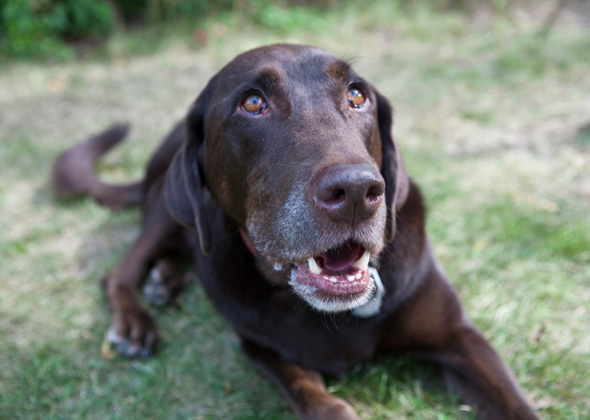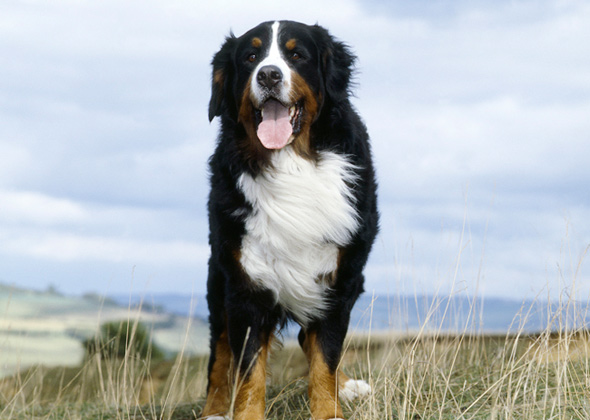8 Tips to Help Manage Dog Shedding Season
Published on October 19, 2015
Skip To
Some
dogs shed lightly or moderately year-round, and their people might think they
have it bad. But you don’t know how good you’ve got it until you experience
life with a double-coated breed that sheds in spring and fall.
Hair, Hair Everywhere
Seasonal
shedding, the phenomenon known as “blowing coat,” sometimes comes as a
surprise — and not in a good way — to new owners of shorthaired dogs such as
Beagles, Pugs and Labrador Retrievers. Newfoundlands, Bernese Mountain Dogs,
Shibas, German Shepherds and Siberians are also among the breeds that adorn
their owners’ furniture, floors, clothing, toothbrushes — well, you get the
picture — with large clumps of fur in the fall.
Suddenly, you’re faced with tufts of undercoat sticking out and then falling off. When you pet your dog, your hand comes away covered in fur. Dustpuppies lurk in all corners of your home. You ponder whether you should take your dog to the veterinarian because his coat looks so ratty.
The rhythm of hair loss is four beats: growth, rest, loss and replacement. Hair takes its cues for loss and growth from the hours of daylight to which it’s exposed. As the days grow shorter, from fall into winter, the coat may shed to make way for a thicker winter coat.
Give your dog a warm bath. It will help to loosen dead hair. Use a hound glove on the dog while he’s still in the tub. Follow with a pet-safe coat conditioner and then blow-dry him completely (using a low or cool setting) to make sure you get out all the loose hair and undercoat. Repeat weekly or as needed.
Brush every day or two. It will help you to stay ahead of the avalanche of fur. Between baths and brushings, use a lint roller to remove hair from your dog.
Use tried-and-true fur-removal tools. Although these devices need to be used gently to avoid injuring your pet, wire slicker brushes, undercoat rakes, shedding blades, Furminators, hound gloves and Zoom Grooms can be your friends. Talk to your dog’s veterinarian, breeder or a groomer about the best tool for your dog. For instance, Zoom Grooms or grooming mitts work best on shorthaired dogs. With Furminators, be careful not to go overboard and leave your dog bald. Following up with a pin brush will help prevent mats.
Accustom your dog to being vacuumed. Yes, vacuumed — if you have a dog who won’t freak out, that is. Use an upholstery attachment or the “dog” attachments sold by some companies and run it over his body. Many dogs seem to enjoy the sensation. Just be sure to accustom him to it gradually so he doesn’t think you’re coming at him with a roaring snake.
Get the right tools. Start by investing in a good vacuum cleaner. You’ll need it to get up all that hair. You can also use a rubber dishwashing glove or hound glove on furniture and carpets to remove hair. Look online for pet hair lifters, lint removers and the like.
Enlist a professional groomer. She has the tools and the training to get out excess coat.
Relax. Shedding is normal, and it won’t last forever. It just seems like it. And remember: Dog hair is the new black.
More on Vetstreet:
Hair, Hair Everywhere
Seasonal
shedding, the phenomenon known as “blowing coat,” sometimes comes as a
surprise — and not in a good way — to new owners of shorthaired dogs such as
Beagles, Pugs and Labrador Retrievers. Newfoundlands, Bernese Mountain Dogs,
Shibas, German Shepherds and Siberians are also among the breeds that adorn
their owners’ furniture, floors, clothing, toothbrushes — well, you get the
picture — with large clumps of fur in the fall.Suddenly, you’re faced with tufts of undercoat sticking out and then falling off. When you pet your dog, your hand comes away covered in fur. Dustpuppies lurk in all corners of your home. You ponder whether you should take your dog to the veterinarian because his coat looks so ratty.
The rhythm of hair loss is four beats: growth, rest, loss and replacement. Hair takes its cues for loss and growth from the hours of daylight to which it’s exposed. As the days grow shorter, from fall into winter, the coat may shed to make way for a thicker winter coat.
Manage the Mess
Blowing coat can last for a couple of weeks or more than a month. Here are some tips to help you survive with your sanity intact.Give your dog a warm bath. It will help to loosen dead hair. Use a hound glove on the dog while he’s still in the tub. Follow with a pet-safe coat conditioner and then blow-dry him completely (using a low or cool setting) to make sure you get out all the loose hair and undercoat. Repeat weekly or as needed.
Brush every day or two. It will help you to stay ahead of the avalanche of fur. Between baths and brushings, use a lint roller to remove hair from your dog.
Use tried-and-true fur-removal tools. Although these devices need to be used gently to avoid injuring your pet, wire slicker brushes, undercoat rakes, shedding blades, Furminators, hound gloves and Zoom Grooms can be your friends. Talk to your dog’s veterinarian, breeder or a groomer about the best tool for your dog. For instance, Zoom Grooms or grooming mitts work best on shorthaired dogs. With Furminators, be careful not to go overboard and leave your dog bald. Following up with a pin brush will help prevent mats.
Accustom your dog to being vacuumed. Yes, vacuumed — if you have a dog who won’t freak out, that is. Use an upholstery attachment or the “dog” attachments sold by some companies and run it over his body. Many dogs seem to enjoy the sensation. Just be sure to accustom him to it gradually so he doesn’t think you’re coming at him with a roaring snake.
Get the right tools. Start by investing in a good vacuum cleaner. You’ll need it to get up all that hair. You can also use a rubber dishwashing glove or hound glove on furniture and carpets to remove hair. Look online for pet hair lifters, lint removers and the like.
Enlist a professional groomer. She has the tools and the training to get out excess coat.
Relax. Shedding is normal, and it won’t last forever. It just seems like it. And remember: Dog hair is the new black.
More on Vetstreet:













